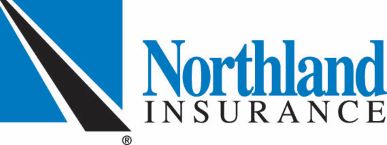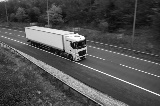Carrier Partner

Carrier rating
- AM Best rated “A++” (Superior)
Coverages
- Auto primary liability
- Physical damage
- Motor truck cargo
- General liability
Target account size
- 1 – 200 Power Units (will consider larger accounts)
Availability
- Non-Fleet (1-10 Power Units) - currently available in all states EXCEPT: AL, CT, DE, DC, LA, ME, MD, MA, MS, NH, NJ, NY, and RI.
- Fleet Only (11+ Power Units) - currently available in all states EXCEPT: AL, DC, LA, MA, and NY.
Submission requirements
- Completed transportation application
- Drivers list that includes date of hire and years of experience for all drivers
- Equipment list that includes VINs for all equipment
- Currently valued loss runs for 3 years. Account size and market dependent.
- Last four quarters of IFTAs, if applicable
- MVRs – market dependent
- Target pricing
Helpful links
Applications
Get Appointed
We work with with retail agents who specialize in transportation. If you feel you would be a good fit, please fill out our get appointed form.
Transportation Insurance resources + insights
Stay up to date on emerging industry trends and topics.
Closing the Gaps in Transportation Pollution Insurance
There can be a lot of surprises – some unpleasant – when it comes to transportation pollution policies.
First and foremost, the underlying motor carrier form (of insurance) which is traditionally used by most writers of transportation insurance does not include coverage for any form of pollution as it relates to the transport of commodities. While there is pollution coverage for fluids used to operate the motor vehicle (e.g., fuel, coolant, etc.), the devil can be in the details, and you need to be on the lookout for what’s not covered.
Identifying Gaps in Coverage
The CA 9948 and MCS-90 endorsements can be added to a commercial insurance policy. Both can include coverage for environmental restoration or environmental loss.
As specialists in transportation pollution coverage, we’ve seen our share of claims. We understand what variables should be considered when looking to fill gaps in coverage. For example, if you own a facility that hires a third party to help transport material for disposal, your company may be on the hook for any spills if the third party does not have sufficient insurance – or any insurance – to cover the clean-up costs, which can be huge. In a recent case where a single vehicle roll-over resulted in a hundred gallons of spilled milk, the underlying motor carrier form didn’t offer a pollution response to the commodities transported. However, the inclusion of the CA 9948 allowed for the insurance provider to respond to the clean-up.
Another gap to consider is coverage for damages to natural resources. For example, a pollution incident may result in the destruction of plants, fish or wildlife. This “natural resource damage” may not fit the traditional definition of “property damage,” so some carriers have specifically added it to clarify their intent to cover such damage. The fines can be extremely expensive, ranging from a few thousand dollars to millions, depending on the damage done. Those fines then go to pay for habitat restoration.
Recently, a motor carrier was offloading fuel at a customer’s location when the customer’s piping for their tank failed. While the petroleum was released into a dike designed for a potential release, it remained contained, but still required clean-up and remediation. The inclusion of the CA 9948 allowed for the motor carrier’s insurance to respond, thus controlling the claim, and then seeking subrogation as the failure was the result of the customer’s equipment.
And, while it may seem like semantics, there is a big difference between a for hire motor carrier and a company fleet, who, for all intents and purposes, is transporting their own goods off-site. This difference in liability exposure should be addressed as it relates to pollution.
Hazardous Materials Coverage
As we said earlier, the devil is in the details. And nowhere is that more evident than when it comes to coverage for transportation of hazardous materials.
When placing coverage, it’s important to be very clear about what is being transported and how often. For example, petroleum fuel is different than diesel fuel and should be identified as such. Also, if the insured is transporting hazardous materials only a portion of the time, it may make more sense to implement separate, monoline policies – one for general freight and one for hazardous materials.
Similarly, when it comes to commodities, markets have become very selective on which they will and will not cover. For example, some markets may find it easier to place coverage for the transport of biofuel commodities, such as soybean oil, and petroleum-based products (which can be determined by whether the product is raw or refined), rather than placing coverage for the transport of food-grade materials like milk or orange juice concentrate.
Other considerations should include coverage for missed deliveries, cleanup when the wrong material is pumped into the wrong tank, spills that occur overnight and more. And, if you are placing an MCS-90 endorsed policy, be sure to note if the insured is a hazmat carrier, which will require a higher minimum.
Adding TPL Coverage to Close Coverage Gaps
While the CA 9948 endorsement can be added to a commercial insurance policy to cover contents being transported, coverage for the loading and offloading of those materials is often excluded. Other potential gaps in CA 9948 coverage include the fact that it only applies to first-party exposure and limits pollution coverage to upset/overturn.
The chart below shows some of the common coverage differences between CA 9948 endorsements and Third-Party Liability (TPL) coverage.
| CA 9948 | TPL | |
| First and Third-Party Coverage | Applies to first party exposure only. | Pollution policies can include coverage for liability on a first and third (hired) party basis for both inbound and outbound transport. |
| Loading/Unloading | Vague language. Coverage is limited to upset/overturn and does not apply to vehicles at rest, gradual leaks and vandalism. | Affirmative coverage can be obtained for “loading and unloading” within the definitions of the policy. What if transloading from a tanker to a railcar? This can be specifically covered under a TPL policy. |
| Cleanup Costs | Cleanup costs are covered – however, no coverage is provided for BI or PD. | Cleanup costs are covered as well as BI and PD costs. |
| Bodily Injury and Property Damage Coverage |
Vague language. Insuring agreement mentions BI/PD, but BI/PD is not mentioned in “covered pollution cost or expense” definition. | Specifically covered in a TPL policy form. |
| Mis-delivery | Not covered. | Better coverage forms specifically include “mis-delivery.” |
| Natural Resource Damage | Not specifically covered. | Affirmative coverage is typically included in a TPL form. |
| Coverage Trigger | Pollution coverage applies only to upset, overturn or damage. | Provides coverage for bodily injury, property damage and environmental damage arising from a pollution condition. |
| What is Covered | Only autos on the commercial auto policy. | Coverage can be included for first- and third-party vehicles, along with boat, rail, and rolling stock. |
| Non-Owned Disposal Sites | Not covered. | Coverage can be included for waste disposal at non-owned location. |
Choose an Experienced Partner
The costs of clean-up and regulatory actions after a pollutant release in an auto accident can be enormous. Businesses engaged in this activity, even sporadically, need to understand the limits of the various options they have for insuring themselves against these risks.
Having an insurance partner who knows where to find these gaps in policies can be key to saving you headaches down the road – no pun intended. The specialists at Amwins know what they’re doing and are ready to work with you to understand your clients’ exposure.
- Daniel Drennan, VP and Environmental Practice Leader, Amwins Brokerage of Birmingham, AL
- Drew Easton, EVP of Amwins Transportation Underwriters
- Josh Panter, SVP and Transportation Broker with Amwins Brokerage of Indianapolis, IN
- Featured
- Transportation


